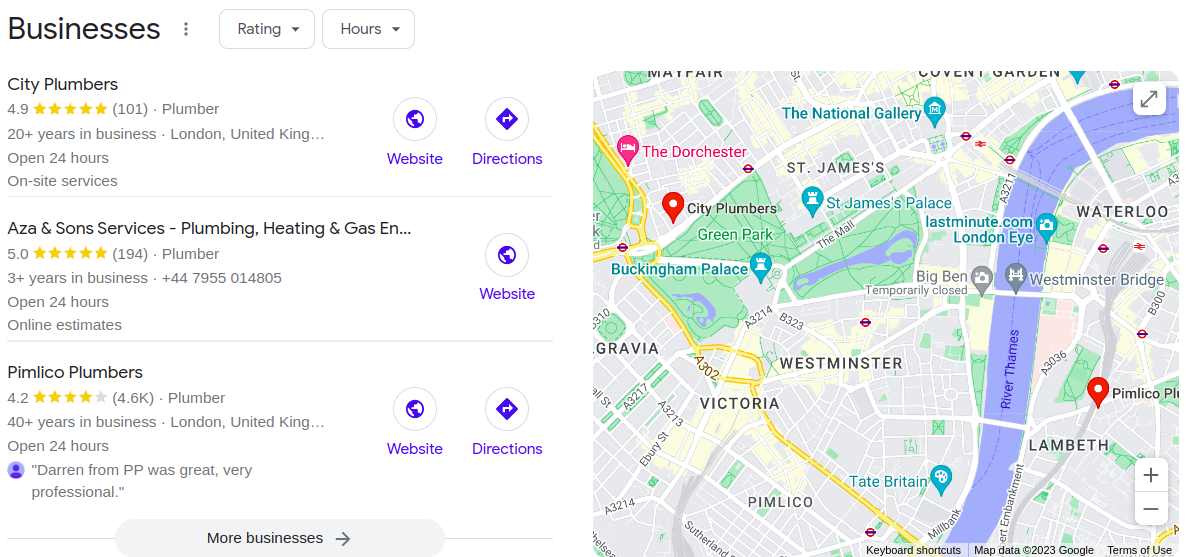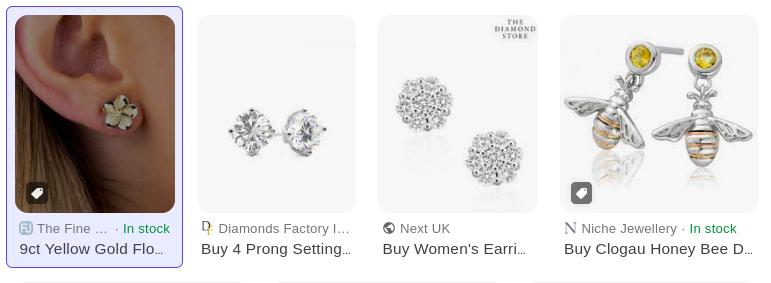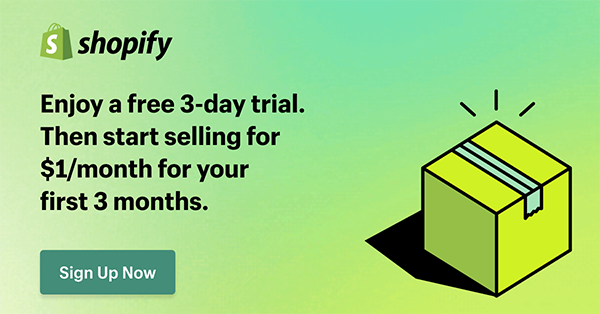Do you run an ecommerce business? The odds are you’re spending a lot of money on paid advertising. Large established brands spend a significant portion of their budget on ads and if you run a store that just started out, you have to spend even more.
That’s outbound marketing, the type of marketing where you have to come to the customer to make a sale. It’s tried and tested, it’s fast, and it produces measurable results at a time when having a cash flow makes or breaks a business.
But it’s hard to call outbound marketing efficient. Stop spending a couple of thousand dollars per month on Google and Facebook ads, and your small eCommerce store won’t have any new business. Outbound also does little to establish a brand image, so you may remain just another eCommerce store to the clients.
But what if customers would come to you, eager to make a purchase? What if they discovered you, learned to trust your brand, and would buy from you without seeing a single ad?
That’s called inbound marketing for ecommerce, and that’s what we’ll explain in this guide.
What is Inbound Marketing?
Inbound marketing is an approach to marketing where the customer approaches the business instead of the business approaching the customer. In most cases, inbound marketing involves creating relevant content and making sure potential customers see it.
Making a sale in the initial stages of inbound marketing isn’t as important. The point of inbound is not to sell hard, but to build a company image first. If potential customers begin seeing your brand as an expert on a certain subject matter and start listening to your advice or just enjoying your content, they’re more likely to convert.
Essentially, with paid advertising, customer eyeballs are exposed to your offers because they’re pushed by advertisers. With inbound, you draw customer eyeballs by making them interested in what you have to share.
The largest appeal of inbound marketing tactics for eCommerce is the factor of return on investment over time. An ad only lives as long as you run it and pay for it. A digital asset that you created for an inbound campaign — a blog post, a book, or a video — lives forever on the web.
As long as it draws people’s attention, it will generate brand recognition and revenue for your eCommerce business.
Why Do You Need an Inbound Marketing Strategy?
You need an inbound marketing strategy to save money. A 2016 survey states that eCommerce brands spent anywhere between 30% to 57% on paid search ads. That investment can only bring you as far.
Google assumes that, on average, for every dollar spent, the advertiser would earn two dollars. There isn’t any consolidated way to estimate ROI of inbound marketing, but according to several agencies, it can range from 270% to 1200% in the long term. The reason is, day to day spending on inbound for eCommerce is minimal and mostly includes salaries and cost of tools.
So inbound marketing is likely to give your organization a better return on investment in the long run.
That said, you can hardly call inbound a free marketing technique. Sure, there are some ways to run inbound marketing campaigns relatively cheaply. Especially so if you run a small store and don’t need to generate hundreds of thousands per month in sales.
But most inbound marketing for eCommerce comes at a cost. Depending on what strategy you choose and what competition you face, the cost can be quite significant, and you won’t see ROI on it until several months later.
Is inbound that good then? It has several key benefits that make it worth the investment:
- Quality of the content matters. Create better content and you’ll get more sales.
- The bulk of spending is done in the beginning and drops significantly as you establish yourself.
- Digital assets produced for inbound continue to make you money for a very long time.
- The impact on the brand image helps outbound marketing.
The key thing is knowing how to approach inbound marketing the right way so you don’t overspend on a strategy that’s not suited for your business.
How Launch Inbound Marketing for your Online Store? Top Steps to Follow
Inbound marketing for eCommerce can provide a decent ROI, but it’s not as straightforward as outbound when it comes to implementing it. The success of an inbound campaign relies on two key things: potential customers can find your content and end up liking it.
Considering that launching an inbound campaign takes a fair bit of resources, it’s best to do plenty of planning beforehand to ensure you create something your customers like. Here’s what you should do before starting a campaign.
Understand your customers
The first and most important thing you should figure out is who your customers are. What information do they search online? What content do they enjoy? Where do they find it?
Answering these questions correctly and building buyer personas can make or break an inbound marketing campaign for your eCommerce business. Here’s how you can arrive at an accurate answer:
- Demographics research
- Keyword research
- Social media research
- Customer journey modeling
- Customer interviews
Based on these buyer personas, decide what content you’re going to produce, where, and how you’re going to distribute it.
Define key metrics
Depending on the channel you’re choosing, you have to define what you’re planning to achieve. Set up key metrics that you’re going to track and measure your success by. These can be as follows:
- Traffic or views
- Engagement rate
- Conversion rate on multiple steps of the marketing funnel
- Multi-channel attribution
- ROI
You can figure out what your goals are for views or traffic by doing some simple calculations while assuming industry-standard conversion metrics.
Let’s say you plan on launching an Instagram page to sell your wares. The average conversion rate for social media is around 1.5%.
Let’s say you plan on spending $5,000 monthly and the average order value is around $200. You’ll need 25 customers per month coming from the page to break even. With the 1.5% conversion rate, you need to get 1700 monthly views on your profile to attract that number of customers.
Create a content plan
Once you know what you’re going to do and how you’re going to measure the effectiveness of your work, plan on how you’re going to be doing it.
When it comes to producing interesting content that attracts new customers, it’s really hard to wing it. So make at least a quarterly plan and run with it to see what works and what doesn’t.
9 Inbound Strategies for Ecommerce
Inbound marketing is all about creating something your clients would love to see, whether it’s something recreational or informational. Here are the ten most prolific channels that can work for eCommerce inbound marketing
Corporate blog
Content marketing is one of the easiest ways to drive website traffic. Finding topics you could write about is quite easy — all you have to do is browse Google or use an SEO tool to find hundreds of topics.
The main idea behind running a company blog is that you cover common problems website visitors may have with the type of product you sell, educate them on certain aspects of using it or buying it, and share other experiences. As you do that, these articles will start appearing in organic search, and people will discover your website.
Once they’re on your site, try to redirect their attention to your company: offer to subscribe to a newsletter, read another article, or promote your product in the article or with pop-ups.
The drawback of running a corporate blog is that there’s a lot of competition. If you’re in a very popular eCommerce niche, the odds are, there are hundreds of retailers that produce content just like yours. Ranking higher than them may prove to be challenging.
If you run an eCommerce business with a limited budget for inbound spend, do a bit of SERP research first. If you think you can write more interesting content than you see on Google, it’s worth a try.
If there are already a lot of articles that explain everything perfectly, you may want to choose another strategy for now.
SEO Optimization
The reason running a blog may be hard is that you’re not just competing on how informative and interesting your content is. You’re also competing on how much authority Google sees in your site.
In most eCommerce niches, there are blogs that have been writing about related topics for decades. Google has all the reasons to show them on the first page and no reason to show your site.
A huge part of search inbound marketing efforts is making sure Google has a good reason to trust your site and display it on the first page where the bulk of visitors are. To do that, you have to do some search engine optimization:
- Create a crawlable website structure
- Create and submit a sitemap
- Ensure all pages are indexed
- Include keywords on website pages
- Update content regularly
- Keep good Core Web Vitals
- Build citations on local sites
- Build links & mentions on the web
Doing all that is a long process, but it’s necessary if you want your blog web pages or landing pages to show up on Google. It also helps with appearing in local searches like this.

Or image searches like this.

eBooks
An eBook is essentially an informational article taken one step further. It’s usually around 3,000 words or more and is presented as a downloadable PDF file that has your company branding.
You can find topics for eBooks by looking at your blog and finding long articles on complicated topics that can’t quite explain those topics fully due to length constraints. Explain that topic as fully as you can, add some illustrations or a case study, and you have an eBook.
This type of content creates a strong brand image — you’ve written a short book so you can be considered an expert. It may not convert readers into customers as much, though, so it’s often used to do a top-of-the-funnel conversion — subscribing to a newsletter.
Email Marketing
Blog content and eBooks can convert on their own, but most likely, you’ll be looking to create a soft conversion — asking users to subscribe to your newsletter. Why? Because email marketing is still one of the best-converting digital marketing methods with an average 3600% ROI.
Email is often used as an outbound marketing method, that is, reaching out to potential leads. That may work for B2B businesses, but B2C eCommerce businesses will end up in the spam folder pretty fast.
What you do instead is send a letter to your email list that has the information subscribers find interesting: insider tips, links to high-quality blogs you’ve published, or even your musings and thoughts related to the industry.

This way, you’ll keep subscribers hooked, and when you do send them information about new products or discounts, they’ll be more likely to buy.
Guest posting
Making your own website rank on page one is hard, especially for new eCommerce businesses. What you can do instead is go on websites that already rank well and write for them.
Not every website lets you do that, and you probably won’t be compensated for your work. But writing valuable content for prominent industry blogs has a lot of benefits:
- You’re getting a backlink, which is good for SEO
- Google will know who you are, giving posts on your own site a boost
- Potential customers who read and trust this site will trust you too
To find a list of websites you can try doing a guest post for, take your biggest competitor (not Amazon or Etsy, though) and run it through an SEO tool to see who links to them. Then, reach out to these sites and offer to write something.
Webinars
Webinars are hard to run. They require expensive equipment, a lot of promotion, and a fair bit of your time to plan and execute. But the result is definitely worth it as B2C webinars have a 20-40% conversion rate.
When you’re planning a webinar, there are two main things you have to achieve. Get enough people to show up and not make the webinar sound like a sales call.
Since webinars have a pretty high conversion rate, they’re best for bottom-of-the-funnel inbound marketing. That means attracting people who already know why you are and trust you. Promote the webinar across your owned media like your website, social media accounts, and newsletter. You can even try social media advertising to draw more attendees.
Try to keep the sales message closer to the end and keep it very minimal. Your goal is to educate first and generate sales second, otherwise, attendees may think you’re not as trustworthy.
Social networks are one of the cheapest ways to sell for beginner eCommerce entrepreneurs. The ads don’t cost as much as running them on Google and users are pretty accustomed to interacting with brands on social media.
Most social media marketing tools allow for marketing automation like chatbots that can answer questions, facilitate sales, and follow-up users with little attention from the sales rep.
For many B2C brands, especially those with a slightly younger target audience, Instagram would be the perfect fit. It may have fewer users than Facebook, but it’s a great place to share visual content of your products and share tips.
A decent inbound strategy for eCommerce sites would be hiring a photographer to take good pictures of your products, give advice in the posts, engage with the audience in the comments, and share upcoming sales in the stories.
Instagram is also well integrated for eCommerce as you can create shoppable posts and sell right on the platform.

Source: Instagram
It’s a good place to showcase user-generated content like this photography brand does.

Source: Instagram/Lomography
USG saves you the resources on creating content, shows users people trust you, and makes clients proud they got featured on your page. A win win win situation.
Facebook is not as visual as Instagram, but it has a couple of features that are useful for inbound methodology. It allows sharing links comfortably, something Instagram avoids even after being acquired by Meta, and creating events.
The fact that each of your posts can have a link means you can boost your blog with the Facebook page. You don’t really need to produce attention-grabbing photos for each post, just repurpose your blog post into several short Facebook posts, and you have your content strategy covered for two channels.
If you really want to drive engagement, though, look into the Facebook videos. Video content seems to be gaining popularity on the platform and it attracts a lot more attention than a simple text post.
A more unique feature of Facebook is that it seems to be great for creating communities. The platform is full of small interest-based groups where people share their experiences and ask questions. Creating and moderating a community like that for your niche is a great way to build consumer trust and drive sales.
TikTok
TikTok was seen as an app for teens just a few years ago, but it’s becoming a marketing powerhouse. In 2022, ad spending on the platform rose 60% quarter by quarter and both brands and consumers are starting to use TikTok for shopping.
Even though, most TikTok videos are pure entertainment, interesting and fun branded content can rise to prominence and generate sales. If you think your product can look entertaining in a 60-second video or you can give good advice in that format, it’s a good idea to try.
Starting out is much more affordable than YouTube as you only need your phone. But with TikTok, you really have to work hard to make the content you produce grab attention as it’s always a scroll away from thousands of influencers.
That said, you don’t really have to earn millions of subscribers to turn a profit on TikTok inbound marketing. It’s more about attracting people who are interested in the products you sell rather than about being viral.
Conclusion
Both inbound and outbound have their benefits and drawbacks. Outbound marketing generates consistent cash flow, but it’s dependent on consistent spending.
Inbound marketing doesn’t require that large of consistent spending and can have higher ROI. It also builds a brand image, something no amount of ads can do.
But it may have a significant startup cost and the outcome depends on your creativity in some cases. Not every eCommerce website owner has the time or the talent to create TikTok videos, after all.
If you know what you’re doing, if you know that your current customers are using a particular channel to discover brands, it’s worth giving it a try.
You don’t have to be as viral as the Kardashians on Instagram or as prolific as Forbes on Google to move the bottom line, so go out there and create something your clients will love.




Comments 0 Responses